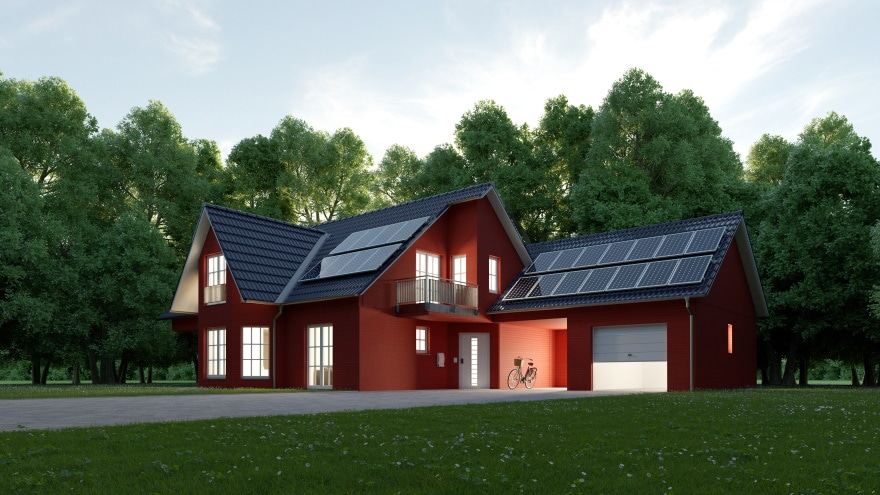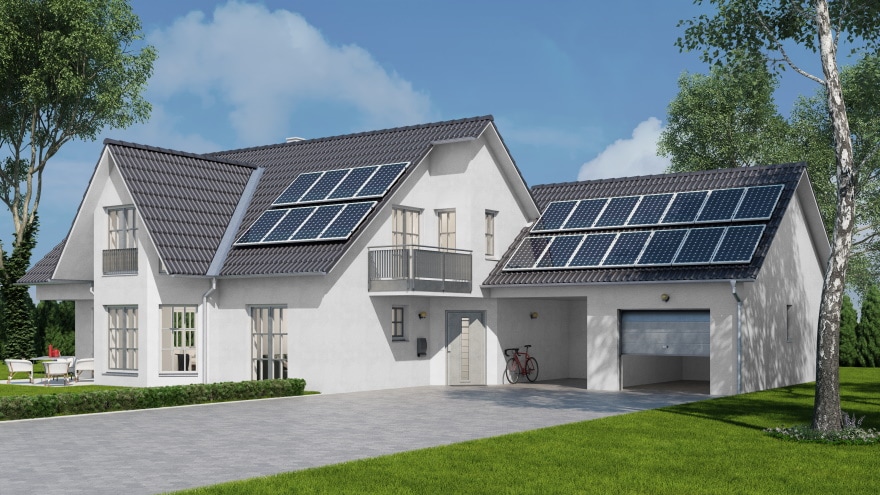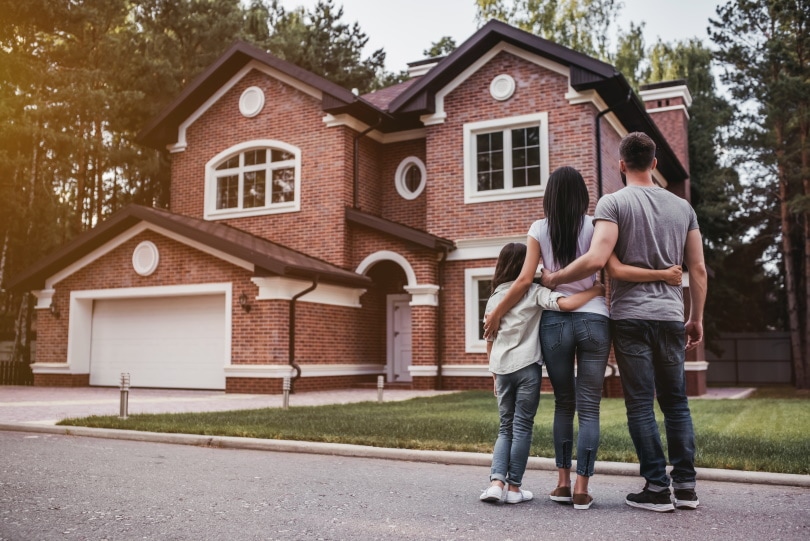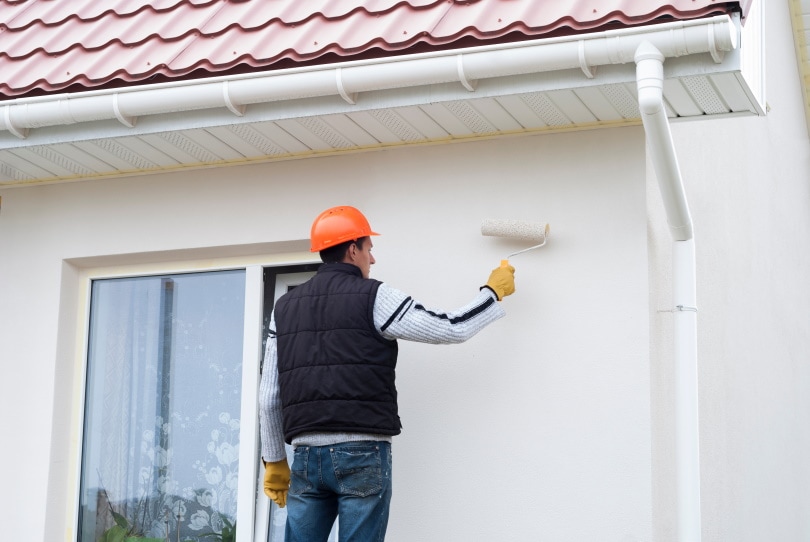What Is a Net Zero Home? What Does Net Zero Mean?
-
Codee Chessher
- Last updated:

Going green is one of the biggest trends these days as technology to combat climate change becomes more widely available for consumers. “Net zero” is a term associated with green technology, but not everyone is familiar with what it entails. What exactly does net zero mean, and how is a net zero home different from a regular home? Let’s check out the answers to both of those questions as well as other relevant info, like the pros and cons of net zero homes.

What Does Net Zero Mean?
Net zero means that any greenhouse gasses produced are balanced out by the removal of greenhouse gasses. In more practical terms, net zero is the same thing as carbon neutral—don’t produce more than you can remove. In fact, net zero is an internationally agreed-upon goal to try and mitigate the negative effects of manmade climate.
Even as we witness some of the first effects of manmade climate change, like drought and famine in Africa, attempts are being made to minimize and erase our carbon footprint as a species. It’s unclear if it’s even possible to reverse the effects at this point, but most agree that it’s well worth trying.
Net zero applications seek to offset the energy used by producing renewable energy on-site. Solar and wind energy are some of the most popular examples of how you can offset carbon emissions. Some other examples include conserving water and reducing solid waste, like plastic.

What Is a Net Zero Home?
A net zero home is a home that produces at least as much energy as it uses and is typically far more energy-efficient than your average home. Net zero homes use cutting-edge design and construction techniques along with energy-efficient materials and solar energy. Net zero homes are homes focused on energy conservation.
Some people think net zero homes are just regular homes with solar panels on them, but that’s not true. Net zero homes have reduced energy requirements as well as renewable energy systems that perform everyday tasks, like heating water.
There are several other features that net-zero homes usually have in common that sets them apart from regular homes. Some are standard, and others may be optional or not present in all homes.
- Efficient insulation that reduces the home’s heating and cooling requirements
- Energy storage systems to save power for rainy and cloudy days
- Energy-efficient ventilation that further enhances HVAC efficiency
- Using the sun to minimize energy needs, like south-facing windows and natural shade features
- Energy-efficient light systems with features like timed or motion-activated lighting
- Rooftop rain-catching systems to conserve water
- Composting areas to reduce biodegradable food waste
- Self-cleaning sewage system
- Dedicated vegetable gardens to reduce dependence on the fossil fuel-dependent agricultural industry
The goal for net zero homes is to be as self-sustaining as possible, and the results are usually very low maintenance homes with little dependence on the power grid. Net zero homes can rightfully be considered off-the-grid because they can usually operate anywhere there’s enough sunlight.

Where Are Net Zero Homes Typically Located?
Net zero homes are commonly located in areas that get a lot of sunlight, at least part of the time. The single biggest game-changer for net zero homes is energy storage systems, which make net zero construction possible in many areas it was thought impractical. Still, persistently cloudy locales make poor choices for net zero homes.
Advantages Of Net Zero Homes
Net zero homes enjoy countless advantages over regular homes, many of which are making them more and more economically viable. Let’s check out some of the biggest advantages net zero homes have to offer.
- Higher resale value than regular homes
- Reduced living expenses
- Reduced dependence on the power grid means you’ll be protected from blackouts, brownouts, and other disturbances
- Zero carbon emissions
- Protection from future electricity price increases
- More efficient HVAC systems

Disadvantages of Net Zero Homes
While net zero homes are an attractive and admirable goal for many homeowners, they’re not necessarily practical in all circumstances. In fact, net zero homes have some clearcut disadvantages over regular homes.
- Expensive to build, meaning a steeper initial investment
- In many cases, you still have to be connected to the power grid
- May not be viable in persistently cloudy or rainy areas
- Requires more education to understand how the technology works
- May not be widely available
- Fewer companies are trained and qualified for net zero construction vs. regular home construction

FAQ About Net-Zero Homes
What’s the difference between net zero homes and passive houses?
Passive house is a term used to describe a house that minimizes its energy usage through stringent insulation and air sealing so that it can maintain its temperature more efficiently than an ordinary house. Passive houses may or may not produce all their own energy, unlike net zero homes.
Passive houses also aren’t as energy efficient as net zero homes, so they might require a more powerful solar system to achieve the same power output.
The goal of a net zero home is to eliminate carbon emissions via renewable energy, efficient building systems, and other aspects. This is fundamentally different from a passive house, whose goal is to most efficiently maintain air temperature via energy-efficient systems and HVAC techniques.

Is net zero as a planet possible?
As an international goal, net zero has a lot of substantial obstacles to overcome. To mitigate the worst of the disastrous effects of climate change, we must reduce our carbon emissions by a significant portion each year. Otherwise, we risk supercharged natural disasters, widespread drought, increasing sea levels, and many other problems.
With guaranteed investments in sustainable technology being made every year, it’s looking more possible than ever to achieve net zero as a goal. Think about how popular electric vehicles are becoming, plus many countries or locales making commitments to minimize carbon emissions.
One of the biggest hurdles for companies is making the initial investment in net zero technology, which isn’t necessarily as profitable or useful in the short term compared to other possible investments.

Conclusion
Net zero homes are an attractive way to eliminate carbon emissions and help the environment in our day-to-day lives. By using state-of-the-art technology and building techniques, they create a sustainable and reliable home. While they have some issues, net zero is ultimately the way of the future if we’re to avoid the worst of manmade climate change.
Featured Image Credit: Robert Kneschke, Shutterstock
Contents
